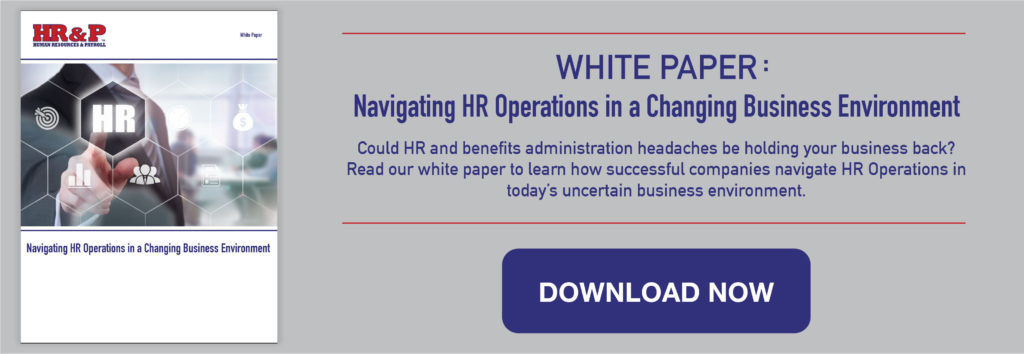
If you are a business who has employed more than 50 employees for at least 20 weeks in the current or previous year, then you need to be familiar with the basic rights of employees under the Family and Medical Leave Act (FMLA). Under the FMLA, employees who have been with their employer for 12 months are eligible for up to 12 weeks of unpaid, job-protected leave in a calendar year for a variety of reasons, including:
- The care and bonding between a parent and their new child, whether the child is biological, adopted or a foster placement
- An illness or injury that makes it difficult or impossible for an employee to fulfill their job duties
- Providing care to a close family member who is ill or injured
- During military deployment or to care for a covered service member
Once an employer determines that an employee is eligible for time off under the FMLA, they need to notify that employee immediately, letting them know exactly how much time they are eligible to receive. Though the FMLA requires that an employer offer employment after their employee returns from leave, they are not required to reinstate the individual in their old job.
Where the FMLA gets complicated
You may be thinking, that all seems pretty straightforward and easy to follow. But when it comes to reconciling federal and state laws with the realities of your employees’ lives, it can get messy. Here are some other key factors related to the FMLA rules and regulations that you should know about:
1. They can vary from state to state
Some states have their own Family and Medical Leave laws. If your business has offices in multiple states, you need to stay aware of what each of those states require of you. Compliance may look very different in Houston than it does in San Francisco.
For example, the FMLA does not require that the time off be paid; however, New York state passed a law for paid family leave in 2016 that will go into effect January 1, 2018. These states fund paid leave through their employees’ payroll taxes and are paid out as disability benefits.
These states may represent the beginning of a more widespread trend. According to the National Partnership for Women and Families, paid leave bills have been introduced in at least 24 states and the District of Columbia in 2017. Of those states, Connecticut, Hawaii and Montana had their bills pass into law this year.
Additionally, California will introduce a more comprehensive plan in 2018, with employers offering new birth parents, adoptive parents and caregivers six weeks of paid leave. This leave will also come out of employees’ payroll contributions.
ABCNews.com reports, “Many states nationwide will be closely eyeing California’s example to see if a paid leave policy — employee funded or otherwise — is something worth considering for their own state.”
2. Employees have rules to follow, too
It is not just the employer’s responsibility to understand and follow the FMLA rules. Employees also have a stake in knowing their rights and what is required of them under the law. Life is unpredictable, but there are certain ways to plan for the unexpected. As an employer, you need to set expectations with your employees about what they must do to remain compliant with the FMLA.
For instance, if the employee knows ahead of time that she is going to need time off (for example, if she has confirmed a pregnancy and the due date) she needs to give you at least 30 days’ notice.
There will be times when employees Amy Underwood, PHR, CPP for HR&P, was contacted by a client seeking advice about one of their employees who was on leave and wouldn’t respond to medical update requests.
Although employees are not required to disclose the exact nature of their or a close family member’s illness, you don’t have to go on the employee’s word alone. You have the right to ask for proof of the medical condition the employee is claiming. In most cases, employees have 15 days to provide medical proof for why they need to take time off. You can also ask for periodic recertification of the health issue. If that is not provided or the information is incomplete, the employer must provide a written notice specifying the information that is needed.
3. FMLA may intersect with ADA requirements
In some cases, an employee with a medical condition who qualifies for leave under FMLA may also qualify for an ADA “reasonable accommodations” request. “Employers sometimes fail to realize that a serious health condition that requires 12 weeks of FMLA leave will likely also constitute a disability under the Americans with Disabilities Act (ADA),” Frank Morris Jr., an attorney with Epstein Becker Green in Washington, D.C., told SHRM. “Even after 12 weeks of FMLA leave, more leave may be required by the ADA or state or local law as a reasonable accommodation.”
HR&P’s Amy Underwood recalled a client for whom the two laws were a source of considerable confusion. “The employee was on a 180-day Performance Improvement Plan, or what they call a PIP,” Underwood said. “The client called me because the employee requested FMLA and then rescinded the request. The employee then came back and said that she had a medical condition that caused memory and concentration problems. The client wanted to know what this meant in regards to FMLA and the Americans with Disabilities Act.”
In general, employees eligible for the FMLA because of a medical condition would take that leave first. On her employment law blog The EmpLAWyerologist, Janette Levey Frisch explains:
If an employee has a “serious health condition” under the FMLA that is also a “disability” under the ADA and if s/he is otherwise eligible for FMLA leave, then you will most likely need to follow FMLA requirements initially. Why? The FMLA generally provides greater leave protection to employees, and you will want to follow the more restrictive law to protect against consequences of violating both laws.
When employees let you know that they are suffering from a medical condition that leaves them physically or mentally debilitated, it’s essential that you take this information seriously. If the employee is having performance issues (such as the kind that would necessitate a PIP) this may be what prompts them to speak up about it. As their employer, it is your responsibility to assess the situation and determine what accommodation is needed—or else potentially face legal trouble under the FMLA and/or the ADA. (HR Hero)
4. Employers also have the option to offer intermittent time off
Some companies offer employees the option to take intermittent FMLA leave time combined with a telecommuting option. But that provision got at least one employer sued by their employee when complications and ignorance of FMLA rules arose. As is true with regular FMLA rules for medical leave, companies can ask employees who are requesting intermittent time off for a medical condition to provide medical certification for the leave from a health care provider, as well as recertification as necessary.
An excellent example of the combination of intermittent leave and telecommuting is illustrated in another client story shared by Underwood. She had a client who wanted to provide the support and compassion needed for a valued, exempt classified employee who needed time and flexibility to care for a parent in ICU. Underwood worked with the company to create a plan for the employee to work in the office 2 days a week and from the hospital three days a week, with the understanding that the employee would be working as circumstances allowed and would accurately report any intermittent leave. This solution reflected considerable compassion and trust on the part of the employer and considerable honesty on the employee’s part to report intermittent leave as taken for tracking purposes within the 12 week FMLA window.
5. Just because you have less than 50 employees, doesn’t mean you can afford to ignore the FMLA
Even businesses with less than 50 employees should know about the FMLA and consider what it would mean to employees — current, as well as future, new hires — if they offered a similar benefit. A certain amount of work-life balance is essential to productivity and good health, and knowing that your employer offers enough flexibility to allow you time to bond with a new baby or recover from a health problem helps build employer/employee trust and loyalty.
Some small businesses simply don’t have the headcount to allow for extended periods of leave, unpaid or not. If you have a 3-person office and each person performs specific functions that cannot be covered by a temporary worker, it just might not be feasible to offer it.
However, in a tight job market where the competition for talent is fierce, small to mid-sized companies need to consider what they can offer applicants who may be weighing job opportunities from competitors. This means that even if you are not required by law to offer unpaid, job-protected leave, you may want to do so anyway. This is particularly true if you are a growing business or expect to
Have questions about the FMLA or want assistance with other HR compliance and administration issues? HR&P can help. Please contact us.
TESTIMONIALS
As we’ve grown, so have our administrative and payroll needs. That’s why we’ve partnered with HR&P. HR&P supports us every day with human resources, payroll, benefits and compliance so we can focus on being the best BB’s Cafe we can be!
Since 2010, my company has grown to over five hundred employees. With our tremendous growth we needed a human resources and payroll company that could grow with us. That company is HR&P. And as laws have changed, like the Affordable Care Act, HR&P has kept us in compliance. I focus on growing Twin Eagle. I trust HR&P with the rest.
We are the industry leader in Oil Spill Cleanup Products and have dealt with numerous Oil Spill disasters. Knowing up close what a disaster looks like we choose to avoid them in our offices. HR&P guides us through the land mines of HR, Payroll and Benefit compliance so my team can focus solely on helping our clients with their problems, and we avoid our own.
One of the best things we did for our business was to partner with HR&P. They’re the experts in human resources, payroll and benefits administration.
HR&P’s web based solutions make it easy for us to manage our employee’s needs. They also help us stay compliant with the Affordable Care Act and with “the alphabet soup” of constantly changing Governmental regulations.
I run a restaurant, from early in the morning to late at night, our team works hard to deliver great food in a fun atmosphere.
But there’s a lot more to running a business like human resources, payroll, benefits and compliance. So we turn to HR&P.
Outsourcing to HR&P keeps us focused on our business.
NEWSLETTER
To receive more HR articles and tips that keep you informed, sign up for our newsletter.

